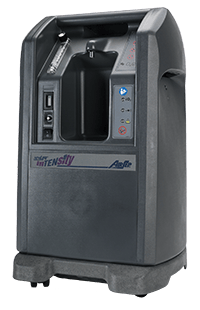[Last updated May 31, 2024]

Long-term care can be expensive, yet these services may be essential to a senior’s health and quality of life. Medicaid, the public insurance program designed to help people with low incomes, may help cover qualifying seniors’ long-term care services. To receive these services, Medicaid beneficiaries often live in an institutional residential setting, like a nursing home. But what if a senior with Medicaid doesn’t need the level of care a nursing home provides? What if they have those needs but want to live at home instead? Medicaid waivers exist to help beneficiaries needing long-term care access the services they need in the residential setting that is best for them. Here, we’ll explain Medicaid waivers, who is eligible for them, and how to apply for a Medicaid waiver.
What is a Medicaid waiver?
Medicaid waiver programs are available to individuals with specific health care needs. Through a Medicaid waiver, the federal government can waive rules that typically apply to the Medicaid program, including the types of care it covers. These waivers can allow coverage for home- and community-based care rather than the individual having to live in a nursing home facility to receive care.
If a person does not want to live in a nursing home to receive these services, this is where a Medicaid waiver can help. An individual can submit a Medicaid waiver to their state, which could allow that person to receive coverage for certain services that Medicaid wouldn’t typically cover. Some of these services may include:
- Nursing care.
- Adult day care.
- Personal care and support services.
- Case management.
- Financial management.
Types of Medicaid waivers for individuals
There are different types of Medicaid waivers available across the U.S., but in general, most of these can be broken down into a few main Medicaid waiver categories:
- Section 1915(c) waivers, also known as home- and community-based services (HCBS) waivers.
- Section 1915(j) waivers, related to self-directed personal assistance services (PAS).
Let’s go over these waivers so you can begin to learn if one of these could help you or a loved one.
Section 1915(c) waivers: Home- and community-based services (HCBS) waivers
Medicaid Section 1915(c) waivers are also referred to as home- and community-based services (HCBS) waivers. These waivers allow states to provide services to individuals who need long-term care and live in the community rather than in a long-term care facility. Living “in the community” means the person lives at home or in the home of a family member as opposed to in a residential facility setting, like a nursing home.
With an HCBS waiver, a person can receive Medicaid-covered long-term care services while living at home. Under “traditional” Medicaid long-term care coverage, that person might need to live in a nursing home or other institutional setting to be eligible for those Medicaid-covered services.
Nearly all U.S. states offer services via HCBS waivers. States are allowed to operate as many home- and community-based services waivers as they want — both medical and nonmedical — provided that the services follow an individualized and “person-centered” plan of care.
This care strategy is essentially directed by the person receiving the care, putting the individual at the center of the planning process. Person-centered planning (PCP) typically involves the individual being involved in their:
- Health care decisions.
- Housing choices.
- Preferences on what brand of medical supplies and equipment are used.
- Preferred clothing to wear.
In some cases, services offered may even help an individual transition from receiving care in an institution back to a home- or community-based setting.
Section 1915(j) waivers
Section 1915(j) waivers relate to self-directed personal assistance services (PAS) provided under the Medicaid state plan and/or Section 1915(c) waivers that the state already has in place, which provide individuals with active roles in their care.
It is important to note the difference between the person-centered planning mentioned above and self-directed care: While person-centered planning provides the basis for self-directed arrangements, self-directed care allows an individual to have greater control over services and supports than is possible under traditional health care arrangements.
Under Section 1915(j) self-directed care waivers, beneficiaries may:
- Choose who provides their care.
- Direct the types of care they receive but cannot provide independently. The Centers for Medicare and Medicaid Services offers the example of this case, where someone with a physical disability is directing their exercise plan.
Under traditional Medicaid coverage, an individual might live in an institutional setting to be eligible for Medicaid coverage of their care. With a 1915(j) waiver, individuals self-direct their care and can choose their care providers (including family members) and where they receive this care, such as in their home. They “set their own provider qualifications and train their PAS providers. Participants determine how much they pay for a service, support, or item.”
Who is eligible to apply for a Medicaid waiver?
The Medicaid waiver program is available to individuals with specific health care needs who wish to receive care outside of a skilled nursing home facility. Eligibility criteria can vary depending on the state as well as the specific Medicaid waiver being applied for.
As an example, with the HCBS waiver, those with incomes lower than 150% of the federal poverty level and who do not have to reside in a facility to receive care can generally apply.
However, in this case, in order to be eligible, an individual may still have to demonstrate that they need a level of care that meets the state’s eligibility requirements for services in a facility-type setting. States may also set additional requirements so the waiver targets care services to those with specific needs.
While some states offer generous benefits through the Medicaid waiver program, others do not. There may be a waiting list for a Medicaid waiver program in your state.
Before applying for a Medicaid waiver, it’s important to contact your state’s Medicaid office. You can find out about the specific programs available in your area, eligibility requirements, and potential waitlists that could apply to you.
How to apply for a Medicaid waiver
Before submitting a Medicaid waiver application, be sure that you meet all the eligibility criteria, including income and asset limits.
You may also have to provide additional information, such as the following:
- Copies of your Social Security and Medicare cards.
- Bank statements.
- Proof of income.
- Copies of life insurance policies.
- Deeds to any property you own.
In some cases, the approval process could take a month or longer. Based on federal law, Medicaid offices have up to 45 days to review and approve or deny a Medicaid waiver application.
It is important to follow all the necessary steps to apply for Medicaid waivers. Otherwise, your application could be delayed or denied altogether.
Keep in mind that Medicaid waivers are not entitlements, meaning that even if you meet the eligibility criteria, you are still not guaranteed benefits because there is often a limited number of enrollment openings.
To learn more about the Medicaid waiver program and how to apply for one, contact your local Medicaid office through your state’s Department of Social Services or visit the Medicaid website directly at https://www.medicaid.gov.
If you think a Medicaid waiver can help you
If you or a loved one needs long-term care services but you’d like to see if you qualify to receive them while living at home, a Medicaid waiver may be able to help.
The Medicaid waiver program and the application process can be somewhat complicated. It is important that you use the proper resources, such as your state’s Medicaid website, to ensure that you’re moving in the right direction.








